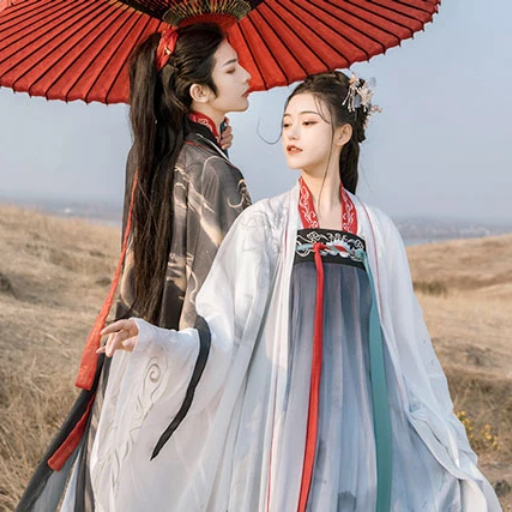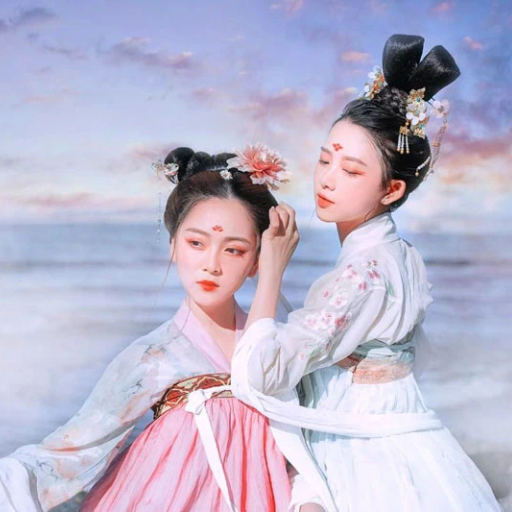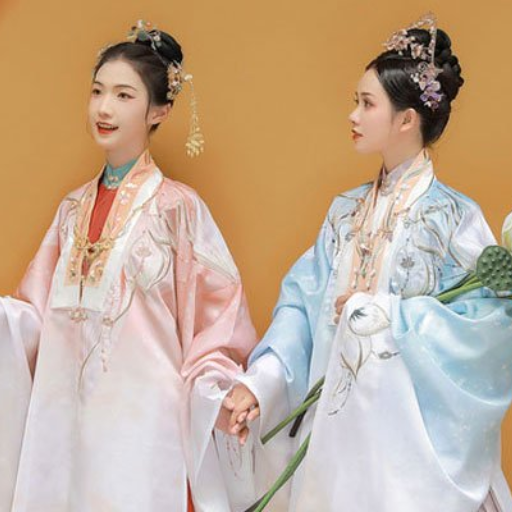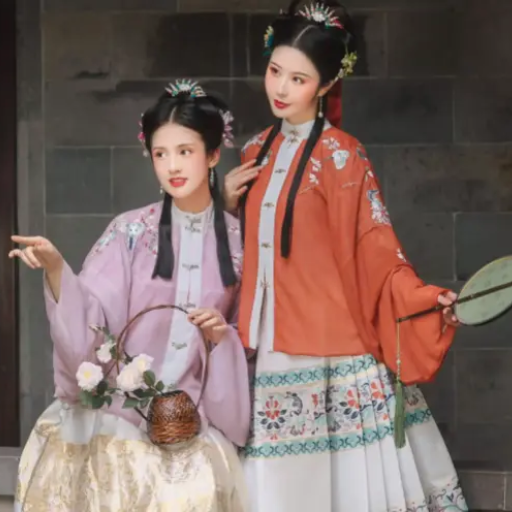Historical Origins of Traditional Chinese Clothing

Chinese traditional apparel has a rich history that goes all the way back to the ancient dynasties and has been adapting with the times and society’s norms. The first roots of Chinese traditional attire can more or less date back to the Shang Dynasty (1600–1046 BCE), where silk was introduced and made into clothes, which later turned into their official attire.
The spirit and even form of clothing was dictated by the “five categories” according to Confucian values and these are categories that pertain to modesty, virtues, and ranks among the social classes. In the Han Dynasty period (206 BCE–220 CE), the categories of clothing were none other than Hanfu, with grace and flowing robes, wide sleeves and high turned-over collars.
Ancient Beginnings: The Evolution of Hanfu
Key Features of Traditional Hanfu:
- Loose robes with long, full sleeves
- Cross-over collar worn on the right side
- Fastened with ribbons rather than buttons or zippers
- Symbolic patterns, including cloud symbols, dragons, and phoenix birds
Clothing in Early Dynasties: From Xia to Qin
| Dynasty | Period | Key Characteristics | Materials Used |
|---|---|---|---|
| Xia | c. 2070-1600 BCE | Simplified clothing made from natural fibers | Hemp |
| Shang | 1600-1046 BCE | Introduction of silk; improved cotton cultivation | Silk, cotton, hemp |
| Zhou | 1046-256 BCE | Emphasis on modesty, economy, and simplicity | Various textiles with color restrictions by rank |
The Impact of the Silk Road on Chinese Fashion
The historic Silk Road has played a central role in the creation of Chinese fashion due to the fostering of cultural intermingling and the exchange of materials across regions. The Silk Road was responsible for introducing new textiles such as wool and cotton as well as dyeing knowledge from Persia and India which enabled Chinese fashion to flourish.
Silk Road Contributions to Chinese Fashion:
- Introduction of new textile materials (wool, cotton)
- Advanced dyeing techniques from Persia and India
- Cultural fusion in design patterns and motifs
- Enhanced silk production and distribution methods
Cultural Significance Across Dynasties

Fashion has repeatedly been upheld under the dominant waves of Chinese developments, offering a kaleidoscopic view of the fixity and the dynamism in the social systems acquired by different eras.
Clothes showed Confucian concepts such as modesty and peace through long sleeves and dull colors, emphasizing social harmony and proper hierarchy.
Dazzling silk decorations symbolized opulence and the ‘world is one family’ principle, reflecting China’s cultural confidence and international influence.
Featured beautiful, perfectly shaped and layered costumes with high chignons, representing refined elegance and sophisticated craftsmanship.
Qing Dynasty: The Height of Traditional Aesthetics
The rule of the Qing dynasty (1644–1912) was the golden age for traditional Chinese culture, bringing about the fashion trend of chi-pao, a long, one-piece, elegant gown. This period was characterized by:
- Intricate Embroidery: Featuring dragons (power) and phoenixes (beauty) in colorful pictorial motifs
- Premium Materials: Skillful use of silk, satin, and brocade embroidery
- Color Symbolism: Yellowis reserved exclusively for the emperor as a symbol of supreme authority
- Manchu Influences: Introduction of the magua coat and tall shoes for women
Influence of Confucianism on Clothing Styles
The philosophy of Confucianism had significant effects on clothing composition during various dynasties, emphasizing order, respect, and moderation. Clothing became a visual element, enriching specific social and Confucian ideals.
Confucian Principles in Clothing:
- Modesty: Loose-fitting garments represented societal reverence
- Social Hierarchy: Colors and designs indicated specific social levels
- Gender Roles: Women’s clothing emphasized modesty through long skirts and high necklines
- Moral Virtue: Clothing served as a pedagogical tool for reinforcing ethical standards
Symbolism and Colors in Traditional Clothes
Traditional Chinese clothing served as more than mere garments; they were an expression of cultural identity, social status, and spiritual beliefs.
| Color | Symbolism | Who Could Wear It | Occasions |
|---|---|---|---|
| Yellow | Supreme authority, divine legitimacy | Emperor only | Imperial ceremonies |
| Red | Good fortune, joy, celebration | All classes | Weddings, festivals |
| Blue | Nobility, tranquility | High-ranking officials | Court functions |
| Gold | Wealth, prosperity | Wealthy merchants, nobles | Special celebrations |
Regional Differences in Chinese Clothes

China’s vast geographical area and diverse ethnic populations have led to significant regional variations in traditional clothing styles, each reflecting local climate, culture, and customs.
Northern Regions (Beijing, Inner Mongolia)
- Heavier fabrics like wool and cotton for cold climates
- Break-length coats lined with animal fur
- High-stiff collars for wind protection
Southern Regions (Guangdong, Fujian)
- Lightweight silk for warmer climates
- Loose, breathable clothing designs
- Fine Suzhou embroidery and vibrant Xiang embroidery
Ethnic Minority Variations
- Miao: Beautifully handcrafted clothes with floral embroidery and silver jewelry
- Zhuang: Distinctive patterns and traditional weaving techniques
- Yi: Unique geometric patterns and color combinations
Fabrics and Techniques: Silk, Brocade, and More
China has a rich textile and cloth-making heritage, with silk being the most celebrated fabric for millennia. The production techniques and artistic applications have been refined over thousands of years.
Traditional Chinese Textile Techniques:
- Silk Production: Using silkworm cocoons to create delicate, shiny fabric
- Brocade Weaving: Combining silver and golden threads with silk for intricate patterns
- Embroidery: Regional styles including Suzhou’s fine silk work and Hunan’s vibrant Xiang embroidery
- Modern Innovations: Digital technologies are enhancing traditional designs while maintaining sustainability
Distinctive Features of the Qipao and Tang Suit

The Qipao (Cheongsam)
The Qipao is a graceful, body-hugging one-piece dress celebrated for its elegance. Originally evolved from traditional Han clothing during the Qing Dynasty era.
- Standing collar (mandarin collar)
- Side openings (slits)
- Detailed patterns featuring geometric designs, birds, or flowers
- Form-fitting silhouette that emphasizes the feminine figure
- Traditional silk fabric (modern versions use various materials)
The Tang Suit
The Tang Suit represents Chinese formal wear that gained international recognition, typically featuring a Mandarin collar and Chinese frog fastenings.
- Mandarin collar design
- Chinese frog fastenings (pankou buttons)
- Golden embroidery representing health or longevity
- Various colors with specific symbolic meanings
- Form-fitting cut suitable for formal occasions
Evolution Through Social and Political Changes
Clothing During the Republic of China
The Republic of China era displayed dynamic Chinese fusion heritage, reflecting cultural and political changes following the fall of the Qing dynasty in 1912.
Republic Era Fashion Changes:
- Breakdown of strict imperial dress regulations
- Introduction of Western influences alongside traditional styles
- Shanghai emerged as a fashion and trading hub
- Over 60% of urban males adopted Western suits by the 1930s
- Development of the Zhongshan suit (later known as the Mao suit)
Post-1949: Changes in Fashion and Identity
The establishment of the People’s Republic of China in 1949 brought significant changes to fashion, emphasizing egalitarianism and practical clothing over individual expression.
| Period | Fashion Characteristics | Political Influence | Preferred Colors |
|---|---|---|---|
| 1949-1966 | Standardized, practical clothing | Communist ideology emphasized uniformity | Blue, grey, green |
| Cultural Revolution (1966-1976) | Extremely austere, anti-luxury fashion | Extravagant designs are prohibited as bourgeois | Blue, grey, green, red (for students) |
| 1980s-Present | Gradual Western influence, individual expression | Economic opening allowed fashion diversity | All colors, international trends |
Modern Adaptations of Traditional Chinese Clothing

Contemporary revisions of typical Chinese attire merge existing forms with 21st-century taste, establishing new garments that honor rich cultural history while embracing modern functionality.
The Qipao: Reinventing a Classic for Contemporary Fashion
The modern qipao has undergone significant transformations while maintaining its cultural essence.
Modern Qipao Innovations:
- Sustainable Materials: Use of eco-friendly fabrics and recycled materials
- Versatile Designs: Adaptations suitable for everyday wear and professional settings
- Global Appeal: 35% increase in searches for “Stylish Cheongsam” over the last three years
- Celebrity Influence: International figures promoting qipao designs worldwide
The Tang Suit in Modern Wardrobes
The 21st-century Tang suit has outgrown its traditional roots to become a global trend popularizing Chinese culture.
- Suitable for both formal and casual occasions
- Contemporary designs mixing Eastern creativity with Western pragmatism
- 35% increase in online searches over the past two years
- Sustainable versions using organic cotton and recycled materials
- Growing international market presence
Fusion of Traditional Elements in Global Fashion
The world fashion industry is currently embracing the combination of classic and modern styles, creating unique hybrid approaches that honor heritage while embracing innovation.
Global Fashion Fusion Trends:
- Market Growth: 45% increase in searches for “traditional meets modern fashion” in 2023
- Luxury Collaborations: Major brands like Dior, Gucci, and Zara are incorporating traditional elements
- Sustainable Production: Focus on ethical manufacturing and community partnerships
- Cultural Appreciation: Emphasis on respectful integration of traditional techniques
Frequently Asked Questions (FAQs)
Conclusion: Traditional Chinese clothing represents more than mere garments—it embodies thousands of years of cultural evolution, artistic achievement, and social values. From the elegant Hanfu of ancient dynasties to the modern adaptations gracing international runways, Chinese fashion continues to bridge the past and present, offering the world a glimpse into one of humanity’s richest cultural traditions. As we move forward, the fusion of traditional craftsmanship with contemporary innovation ensures that Chinese clothing heritage will continue to inspire and influence global fashion for generations to come.
Reference Sources
1. Harvard University: Drawing Fashion
Explains the visual representation of fashionable Western clothing in Chinese cities from the early Meiji era to recent times.
2. Stanford University: The Politics of Fashion
Chinese Fashion Designs, their Graphic Renditions, and Meaning – Discusses popular design motifs employed in Chinese traditional dress and their evolution throughout Chinese history.
3. University of Pennsylvania: Everyday Fashion Media 300: Advanced Historical Analysis of Fashion. Explains traditional Chinese clothing, focusing mostly on women, identifying the motifs, structures, and materials utilized.







